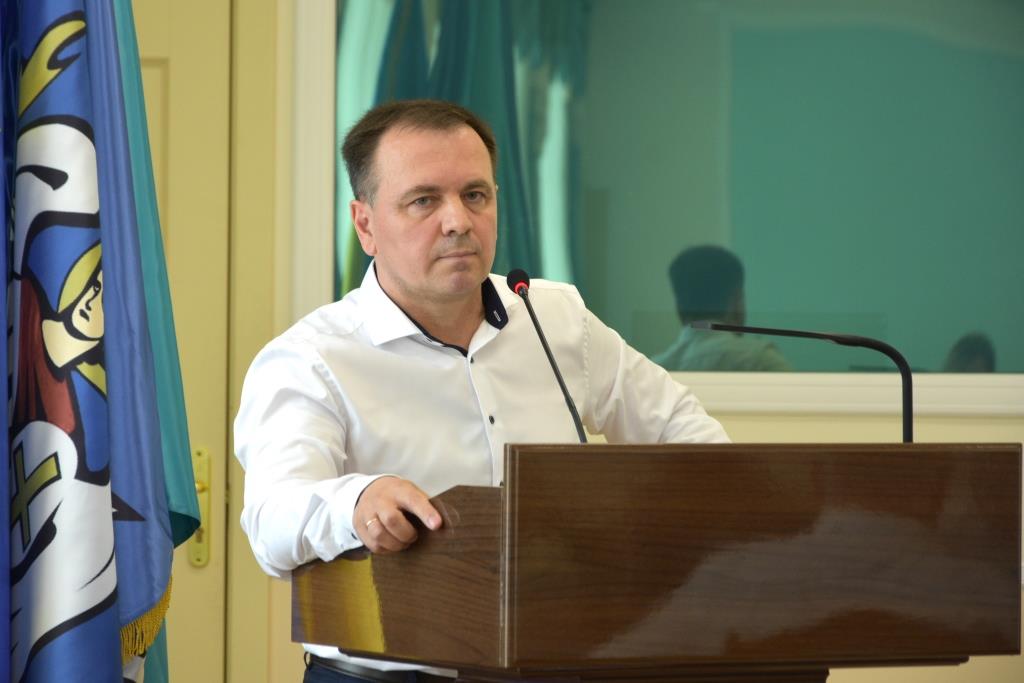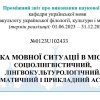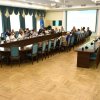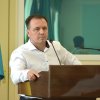
On June 19, 2025, at a meeting of the Academic Council of the University, Mykhailo Vintoniv presented an interim report on the results of the implementation of the research work of the Department of Ukrainian Language at the Faculty of Ukrainian Philology, Culture and Art “Dynamics of the Language Situation in the city of Kyiv: Sociolinguistic, Linguocultural, Pragmatic and Applied Aspects” (registration number: 0123U102433; term of implementation: 04. 2023 - 04. 2028). The implementation of the scientific theme involves 18 academic staff members at the department, as well as students of various higher education levels and applicants for the degree of Doctor of Science.
Scientific results at the theoretical level: theoretical and methodological approaches to the study of the onymic environment of Kyiv have been developed; typology of onymes has been deepened; trends in the linguistic environment of Kyiv have been outlined, in particular, the dynamics and liberalisation of the language norm, striving for language play and variability; Latinisation, graphic deconstruction, including quasi-remotivation, capitalisation, supragraphemics, syngrammatics and pictographics, as well as their possible combinations, have been commented on; the functions and types of motivational structure of landscape units have been singled out; the inscriptions have been classified by structural features and language design; the educational, informational and symbolic impact of the foreign language linguistic landscape on the development of multilingualism and intercultural communication in Kyiv has been clarified.
As of 30 December 2024, 2833 urbanonyms were recorded, analysed by structure, origin and commented on the need to replace a particular urbanonym. The author collected 6009 ergonyms of the city of Kyiv (names of clothing stores - 617; names of catering establishments - 3458; names of hotels - 1934). Among the names of clothing stores, 534 were recorded in Latin, 23 in Russian and 60 in Ukrainian. During the analysed period, in the ergonymicon of the city of Kyiv there was recorded the abandonment of Russian-language names and their replacement with Latin or Ukrainian names.
The second important area of the study (sociolinguistic) is the tracing of trends in the educational environment of Kyiv.
As part of the research in 2025, a survey of primary school children (in Kyiv) was conducted on speech practices in extracurricular time. The survey involved 104 participants aged 6 to 10 years - 43.7% of boys and 56.3% of girls. The survey demonstrated that the language situation among primary school children in Kyiv is characterised by a multilayered model of bilingualism with tendencies to strengthen Ukrainian as the main language of education, communication and content, but with a noticeable dominance of Russian in private spheres. According to the survey, 52.4% grow up in a mixed language environment (Ukrainian + Russian), which indicates a flexible, situational language choice of parents. Only a third (32.0%) are raised in Ukrainian-speaking families and 11.7% in Russian-speaking families. Communication with relatives and friends showed the dominance of a mixed model (38.8% speak two languages with relatives, 62.1% with friends in two languages), while 37.9% of relatives and 15.5% of friends speak Ukrainian only. 62.4% of children said that their attitude towards the Russian language has changed because of the war, which is a clear indicator of language dynamics influenced by political events. In terms of content consumption, 45.6% of children consume content in Ukrainian, 35.0% in Ukrainian and Russian, and 8.8% in Russian only. This indicates that Ukrainian is becoming the main language of socialisation through the media, although the share of Russian remains significant. The survey has shown that the language situation among primary school children in modern Ukraine is shaping up as a contact, multi-level and dynamic model in which Ukrainian is being consolidated as the main language of education, official communication and media, while Russian is gradually being reduced to private and informal spheres, and the marginalisation of Russian is being recorded.
The results of the study have been implemented:
- as part of the social project “With Kyiv and for Kyiv”: the Department of Ukrainian Language conducted Ukrainian language courses for people with hearing disabilities during the 2024/25 academic year; free courses for transport and service workers; Ukrainian language courses for the coaching staff of children's and youth sports schools and sports clubs; Ukrainian language courses for third-generation people in the “Life-lover” space, as well as courses for employees of the Kyiv Obolon district's Community Centre for Social Services;
- more than 3,000 terminology units were collected (cooperation with the Department of Physical Therapy and Ergotherapy at the Faculty of Health, Physical Education and Sports to compile the Modern Explanatory Dictionary of Physical Therapy and Rehabilitation to fulfil the terms of reference Terminology in Healthcare and Social Security, approved on 15 May 2025 at a meeting of the National Commission on State Language Standards).
Thus, the linguistic environment of Kyiv is not only a spiritual but also a political matter, so the Department of Ukrainian Language at Grinchenko University works with Kyiv and for Kyiv.
Materials provided by SMC for Research, Scientific Projects and Programmes
![]()
![]()
![]()




